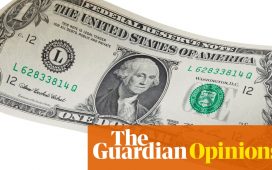The pace of US jobs growth is expected to have slowed further in April, in the first major test of the nation’s economic health since the Federal Reserve signalled it was “getting close” to pausing its cycle of interest rate hikes.
The US is projected to have added 183,000 non-farm payrolls last month, according to economists surveyed by Bloomberg, down from 236,000 in March. If accurate, that would represent the smallest monthly increase since late 2020.
The unemployment rate is forecast to have ticked up to 3.6 per cent from 3.5 per cent, though hourly wage growth is expected to remain solid at 0.3 per cent month-on-month. On a year-over-year basis, wages are estimated to have climbed 4.2 per cent.
The data will be released by the Bureau of Labor Statistics at 8:30am Eastern Time on Friday.
Wages are a key factor in inflation, particularly in the service sector, so economists and investors will be closely monitoring the numbers for signs that higher interest rates are slowing the economy and bringing down inflation.
The US central bank on Wednesday announced its tenth consecutive interest rate rise, lifting its benchmark federal funds rate to a range of 5 to 5.25 per cent. Fed chair Jay Powell said the labour market remains “extraordinarily tight”, but said “there are some signs that supply and demand . . . are coming back into better balance.”
Data released earlier this week supported Powell’s assessment, showing a sharper than expected drop in job openings to their lowest level since April 2021. Still, separate figures released last week highlighted that wage growth remained relatively strong, and inflationary pressures in several areas are high.
Powell stressed on Wednesday that it would still take some time to bring inflation down towards the Fed’s 2 per cent target, but investors have been betting that the central bank will quickly pivot to cutting rates, with the first coming as soon as July.
Jack Janasiewicz, a portfolio manager at Natixis Investment Managers, said stronger than expected jobs or wage growth data this week “would reinvigorate the idea that the Fed is not done”.
He also highlighted the importance of data on the labour force participation rate, which counts the number of Americans who are employed or actively searching for a job. The rate has crept up in recent months after dropping dramatically early in the coronavirus pandemic.
“There are reasons to believe people are coming back off the sidelines and increasing the supply of labour, which is what the Fed is looking for,” Janasiewicz said. “One of the better paths to a soft landing is increasing the supply of labour rather than seeing people get laid off.”
Asked on Wednesday about the tension between the Fed’s dual mandates of bringing down inflation while maximising employment, Powell said: “Right now, we need to be focusing on bringing inflation down. Fortunately, we’ve been able to do that so far without unemployment going up.”




